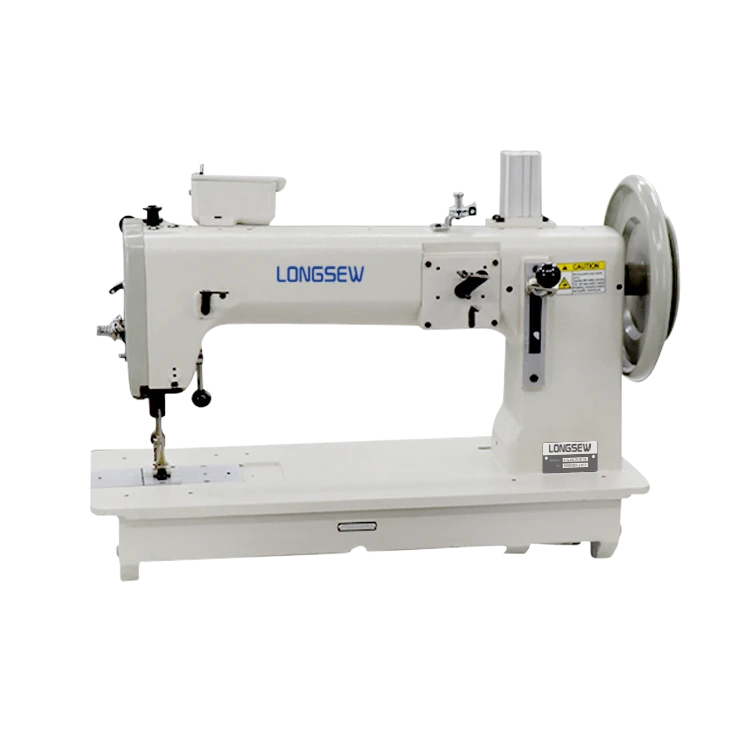Innovative Lock Stitch Sewing Machine for Precision and Efficiency in Fabric Crafting
The Innovation of the Lock Stitch Sewing Machine
The lock stitch sewing machine, a marvel of industrial and domestic textile technology, has transformed the way we think about fabric manipulation and garment construction. This machine utilizes a simple yet effective mechanism to create one of the most commonly used stitches in the apparel industry—the lock stitch. Understanding its operation, development, and application not only sheds light on sewing technology but also highlights its significant impact on fashion and fabric production.
Mechanism of Operation
At the heart of the lock stitch sewing machine is a straightforward yet ingenious design. The machine generally consists of two threads the upper thread, which comes from a spool, and the lower thread that is fed from a bobbin. The lock stitch is formed when the needle punctures the fabric, pulling the upper thread through. As the needle moves down, a shuttle mechanism picks up the upper thread and wraps it around the lower thread (the one from the bobbin). This interlocking of the threads is what creates the tight, secure stitch associated with this method.
The precise tension settings of both upper and lower threads are crucial. Proper tension ensures that the stitch is neither too tight nor too loose, allowing for optimal fabric control. This feature allows the lock stitch to produce strong seams, making it ideal for a variety of fabrics, from lightweight cotton to heavy denim.
Historical Development
The lock stitch sewing machine has a storied history that dates back to the early 19th century, when the first industrial sewing machines were developed. One of the pioneers was Elias Howe, who patented the lock stitch design in 1846. However, it was Isaac Merritt Singer who popularized the machine, making significant improvements that allowed it to be more accessible to the general public.
Singer's innovations led to the widespread adoption of sewing machines in homes and factories. By the late 19th century, sewing machines became a staple in households, revolutionizing the way clothing was made. This democratization of garment production meant that people could sew their clothes, leading to a surge in creativity and individual expression in fashion.
lock stitch sewing machine

Applications and Versatility
Today, the lock stitch sewing machine is ubiquitous in both industrial and domestic settings. In commercial environments, from small tailoring shops to large apparel factories, the lock stitch is essential for constructing everything from basic garments to intricate designs. The machine is capable of sewing straight seams, hems, and even topstitching, making it versatile for various applications.
In home sewing, the lock stitch machine offers enthusiasts the ability to craft personal projects with ease and precision. Whether creating quilts, altering garments, or embarking on ambitious fashion creations, the lock stitch provides reliability and strength. Moreover, modern lock stitch machines often come equipped with numerous features, such as automatic needle threading, programmable stitch patterns, and even embroidery functions, allowing users to elevate their sewing projects to new heights.
The Rise of Technology
As technology progresses, so has the lock stitch sewing machine. Computerized versions of these machines have emerged, equipped with sophisticated software that enhances their functionality. These machines can now store stitch patterns, automatically adjust tension based on fabric type, and even connect to smartphones or tablets for design support. This technological advancement has further broadened the horizons for both professional seamstresses and hobbyists.
Conclusion
The lock stitch sewing machine stands as a testament to human innovation in textile technology. Its simplicity, efficiency, and versatility have made it an indispensable tool in the world of sewing. It not only reflects the evolution of fabric manipulation but also signifies the enduring love for crafting and design. As we move forward, the continued development of sewing technology will undoubtedly enrich the landscape of fashion and craftsmanship, forever linking us to the foundation laid by the early pioneers of the lock stitch sewing machine.
-
Industrial Cylinder Arm Sewing Machine: Revolutionizing Heavy-Duty SewingNewsJul.28,2025
-
Cylinder Arm Sewing Machine: Perfect for Special Sewing ApplicationsNewsJul.28,2025
-
Cylinder Bed Sewing Machine: Essential for Sewing Complex MaterialsNewsJul.28,2025
-
Heavy Duty Sewing Machine: The Essential Tool for Industrial ApplicationsNewsJul.28,2025
-
Computerized Pattern Sewing Machine: Revolutionizing Precision StitchingNewsJul.28,2025
-
Heavy Duty Industrial Sewing Machine: Power Meets PrecisionNewsJul.28,2025
-
Leather Sewing Machine: The Industrial Standard for Tough MaterialsNewsJul.18,2025





























